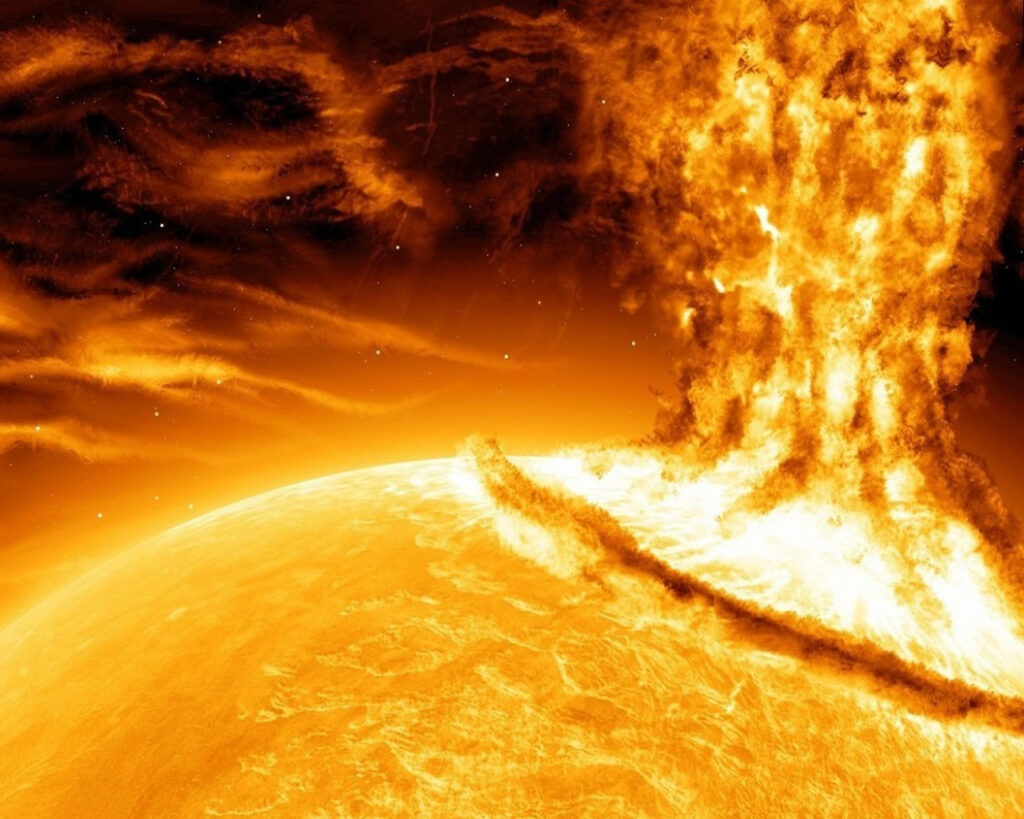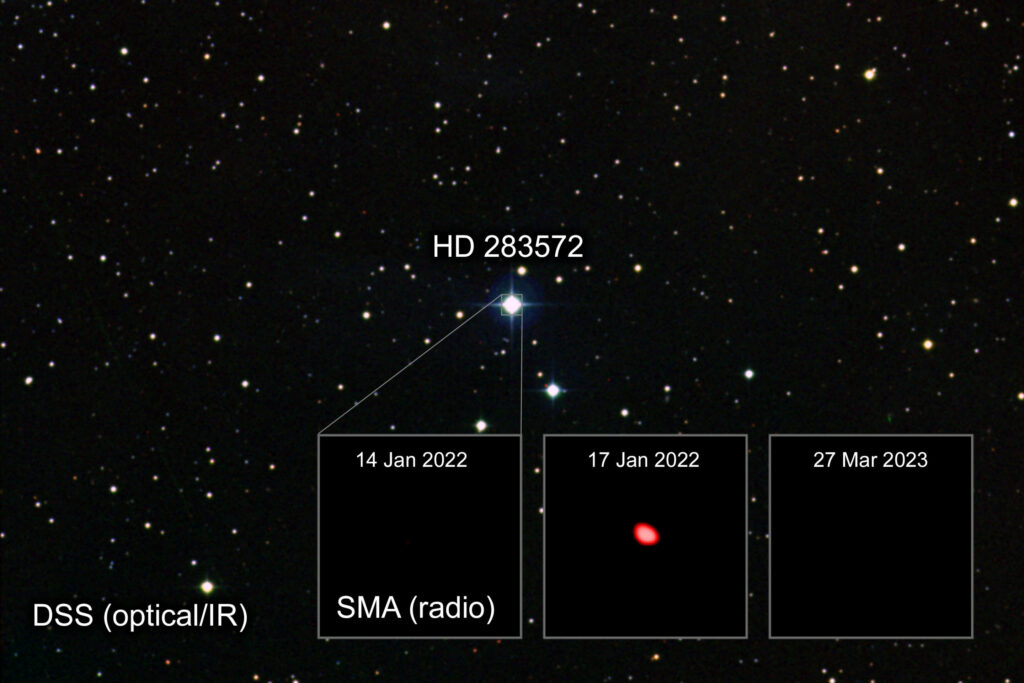American astronomers have recorded a super flare of a young star that has become a hundred times brighter in just a few hours. It gives an idea of how newborn luminaries behave in the early stages of their lives and how they influence the development of planets.

The discovery was made during the study of HD 283572. This is a star with about 40% more mass than the sun, located at a distance of 400 light-years from Earth. Its age is less than 3 million years.
Scientists used radio telescopes of the SMA complex in Hawaii to study the distribution of dust in the protoplanetary disk surrounding the star, hoping to find the beginnings of future exoplanets there. Instead, a powerful flare was recorded, which led to the fact that the luminosity of the star increased by more than a hundred times. In 9 hours, HD 283572 released about a million times more energy than any similar flares in the millimeter range observed on the Sun’s closest stellar neighbors.
According to the researchers, every millisecond of the event was equivalent to the use of the entire nuclear arsenal of the Earth. Since only one flare has been recorded, it remains unclear what exactly triggered it. Perhaps it was the interaction with invisible companion stars or planets, or the periodic activity of starspots.

In any case, the flare is an important clue that allows us to look into the distant past of the Solar System. It indicates that stellar activity can have a very serious impact on newborn planets, limiting the growth of their atmospheres or seriously damaging already formed gas shells. It is possible that such flares can even destroy planetary embryos.
Earlier we talked about the most powerful solar flare in the last six years.
According to https://phys.org
Follow us on Twitter to get the most interesting space news in time
https://twitter.com/ust_magazine


